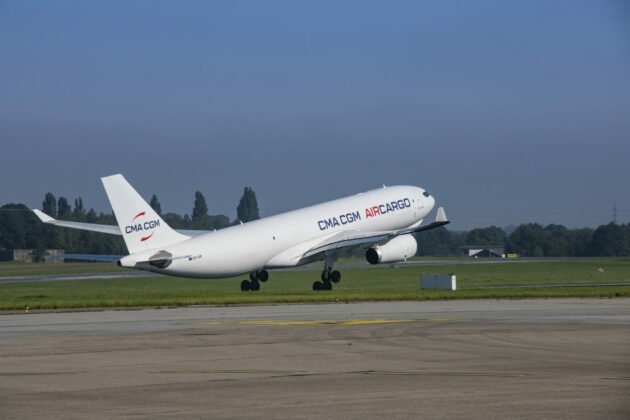Global air cargo demand climbs as shippers seek to dodge U.S. tariffs, says report
Share
Share

Global air cargo volumes jumped five per cent year-over-year in July as more shippers turned to the speed of airfreight to navigate tariff uncertainty in the United States, according to market analysis from Xeneta.
The rise comes despite typically slower summer demand and follows a one per cent increase in June. Xeneta says the gains are partly due to tariff-related frontloading, shifts in shipping modes and persistent uncertainty surrounding U.S. trade policy, prompting companies to accelerate deliveries.
“As we said earlier in the year, air cargo is piggybacking on the chaos being caused by tariffs,” said Niall van de Wouw, Xeneta’s chief airfreight officer. “While the growth in July will come as a pleasant surprise to many, this growth is not a consequence of increased trade. It is a sign of the creative ways companies are trying to circumvent the higher costs of tariffs.”
Capacity increased three per cent over the same period, pushing the industry’s dynamic load factor back to 58 per cent, matching last year’s level and recovering from a two-point drop in June. The load factor measures capacity utilization based on both volume and weight.
“What we are seeing currently is mode shift and that is helping the airfreight market in the short-term,” van de Wouw said. “If you’re trying to circumvent tariffs, you’re going to want to do it fast, and a plane is faster than a ship. Having goods in an ocean container for 30 days will feel like a very long time for a lot of businesses right now.
“Businesses are getting creative to try to avoid or lessen the impact of tariffs. It’s a game of ‘cat a mouse’ between the U.S. administration and companies,” he added.
Even with stronger demand, global spot rates declined for a third consecutive month in July, falling two per cent year-over-year to US$2.55 per kilogram. However, a two per cent monthly increase provided some relief to airlines. Seasonal rates — those valid for more than a month — have dropped more sharply, ending July more than 20 cents below spot rates, compared to just five cents in late May, signaling muted mid-term confidence.
Van de Wouw said the lack of detail around tariffs is “creating a tremendous lot of headaches for people,” but it is also driving more cargo to air.
“Circumventing is about responding quicker, anticipating something else and being prepared to pay a little bit more for airfreight transportation because it is still better than paying a much higher tariff on goods,” he said. “When there is a mess and chaos in international trade, it is to the benefit of airfreight, as we have seen before. And, right now, we have it on an unprecedented global scale. Yes, tariffs are only to and from the U.S, but the lack of clarity is affecting a lot more trade lanes as companies try to reduce their financial risk.”
Looking ahead, van de Wouw warned that “the piggybacking will stop” and that demand could fall once the economic impact of tariffs fully reaches U.S. consumers.
“Economists agree this climate is not good for anyone and, sooner or later, something must give, and demand will fall,” he said. “How long it will be before reality kicks in is hard to assess because this is one massive political dance. In the meantime, air cargo stands to benefit.”
Leave a Reply